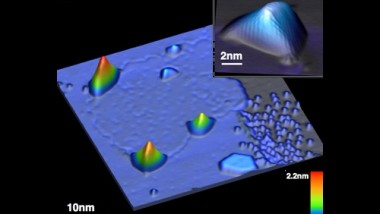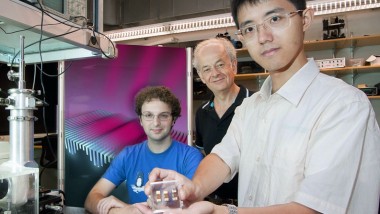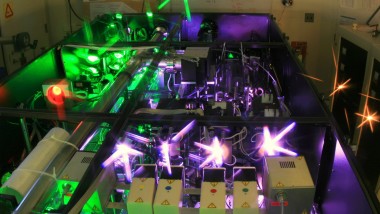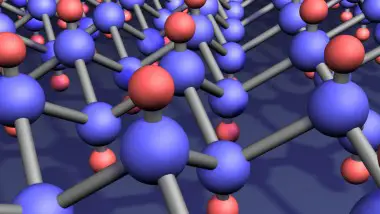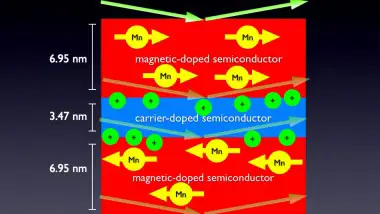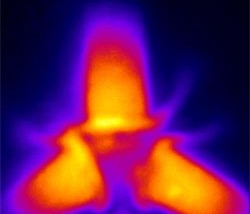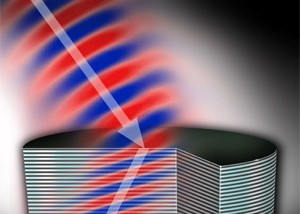Physicists from the University of California, Berkeley, and the Lawrence Berkeley National Laboratory have recently presented an innovativew technique to utilize graphene, a pure carbon sheet used in the semiconductor industry. The new study offers ways to stretch graphene, making ...
Researchers Demonstrate Terahertz Laser Rays
Scientists from Harvard University and the University of Leeds recently demonstrated a new terahertz semiconductor laser capable of emitting beams with a much smaller divergence than conventional terahertz laser sources. The collaborative study suggests several future applications, all relying on ...
Lasers Lengthen Quantum Bit Memory
Scientists from the University of Michigan have discovered a new feedback reaction that has the capability to stabilise the magnetic field of a quantum dot. Using lasers, the team lengthened the stable existence of a quantum bit to more than ...
Graphene-based Insulator Developed
Researchers at the University of Manchester have developed a revolutionary material named graphane (with an “a”). The new material was obtained from graphene through a technique that reacted graphene with other substances to materialize new compounds with distinctive characteristics, which ...
A CPU that Stores Data
Scientists from the National Institute of Standards and Technology (NIST) have demonstrated for the first time the concept of a vital magnetic characteristic of specifically fabricated semiconductor devices. The team hopes that this breakthrough could lead to smaller and faster ...
HP’s Memristor on a Chip
Following the introduction of the memristor in May 2008, HP engineers have recently unveiled the first functioning memristor circuit at the inaugural Memristor and Memristor Systems Symposium. By substituting some transistors with memristors, the team has created more physical space ...
Integrated Circuit Works Using New Excitons
Researchers at the University of California, San Diego, have developed an experimental integrated circuit that works using excitons. Excitons are energized electrons bound to positively charged counterparts called holes, which form when light hits a semiconductor. The commercialization of this ...
Graphene Semiconductors
Physicists at the University of Maryland have proven that graphene holds great promise for replacing conventional semiconductor materials such as silicon in applications ranging from high-speed computer chips to biochemical sensors. At room temperature, graphene‘s intrinsic limit to the mobility ...
Bending Light the Wrong Way
A Princeton University research team has recently created an easy-to-produce material that has the rare ability to bend light in the opposite direction from all naturally occurring materials. This new substance belongs to the relatively new class of materials called ...

